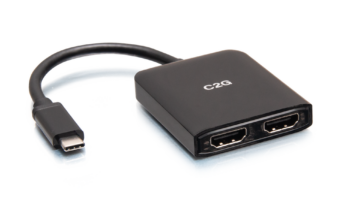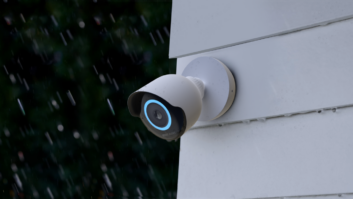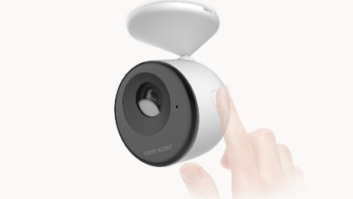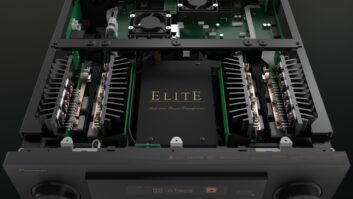Long Beach, Calif. – Pioneer will make 3D-ready HDMI 1.4
inputs/outputs, Dolby ProLogic IIz post processing, proprietary Pioneer Front
Wide post processing, and a stereo Bluetooth option available in its A/V
receivers (AVRs) for the first time.
The capabilities will
appear in all models in the company’s mainstream series at prices starting at $229
street price. The features don’t yet appear in the company’s Elite series of
AVRs.
The features will appear in two 5.1-channel AVRs shipping in
March to April and in new 7.1-channel AVRs, whose details will be announced
later this week. The 5.1 AVRs are the $229 5×110-watt VSX-520-K and $299
5×110-watt VSX-820-K.
With the launch of the AVRs, decoding of all Blu-ray surround
formats drops to $229 from $299, and $299 remains the starting price for an AVR
with Apple-certified iPod/iPhone-controlling USB port and included USB-to-iPod/iPhone
cable. The port, which captures the digital PCM output of an iPhone or iPod, eliminates
the need to buy an add-on $99 dock to dock an iPod or iPhone to an AVR to play
back its stored audio and video content.
The USB port also delivers
playback of audio and video stored on USB sticks and other-brand MP3 players.
The new technologies and price points, along with other new
features planned for new 7.1-channel AVRs, will help Pioneer maintain the
momentum it enjoyed last year, when its AVR sales grew in units and dollars
despite industry wide double-digit unit declines, said marketing manager Dave
Bales.
Record growth in sales of Pioneer receivers priced less than $500
“was a direct result of our enhancements to convenience and connectivity
options expected from Apple users,” he said. The enhancements included the 2009
addition of iPhone certification to its front-panel iPod-controlling USB ports.
Both new models connect to an optional $99 stereo Bluetooth
adapter to stream and reproduce music from iPods and iPhones connected to a
stereo Bluetooth dongle and from the iPhone 3GS, which features embedded stereo
Bluetooth. Bluetooth connectivity will “be big from here on” because of the
popularity of the iPhone 3G S and the proliferation of smartphones,
particularly Android-based phones, Bales said.
3D-ready HDMI 1.4 ins/outs will also become a primary must-have
feature now that 3D content and 3D-ready displays are becoming available, he
said.
In both 5.1 AVRs, the HDMI 1.4 output does not support HDMI’s
audio return channel (ARC) function, but it remains to be seen if the feature
will be available in any of the new 7.1 AVRs to be announced this week.
The $229 model features three HDMI 1.4 inputs, and the $299 model
features four.
Dolby ProLogic IIz, which adds two front-height speakers to a
typical 5.1-speaker setup, will be especially popular with gamers, but for any
consumer, it will deliver a more life-like surround experience and offer an
easier installation solution than many back-surround speaker installs, Bales
said. For the same reason, the inclusion of proprietary Pioneer Front Wide
technology may prove popular with consumers. Front Wide technology adds an
extra pair of horizontal-plane front speakers to expand the width of the front
soundstage, where adding additional speakers is often more practical, Bales
said.
To use either post-processing technology with the two 5.1 AVRs,
consumers must opt for an add-on two-channel amp or powered speakers.
Both 5.1 AVRs feature proprietary Advanced Sound Retriever and Automatic
Level Control. The former enhances the sound quality of two-channel
compressed-music sources, and the latter evens out volume fluctuations when
switching between two-channel audio sources and TV channels. It also levels out
volume differences when a TV program transitions to a commercial.
The $229 model also features front-panel mini-jack input.
The step-up 5.1 AVR adds Sirius-ready port, a text-based onscreen
display, four HDMI inputs and the iPod/iPhone USB port. For the first time,
Pioneer is adding front-panel iPod/iPhone control button to its
iPod/iPhone-controlling AVRs. The button, near the port, lets users choose
between controlling their iPod/iPhone from the portable devices’ controls or
from the AVR’s front panel controls and AVR remote. The control button’s
function was previously available only on a harder to find remote-control
button.
The step-up model also adds
the company’s automatic multichannel acoustic channel calibration to compensate
for the deleterious effects of a room’s acoustics on the system’s sound
quality.












